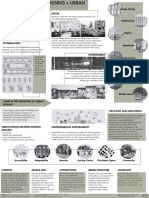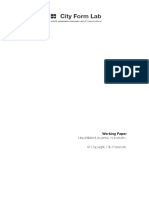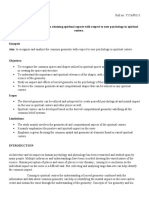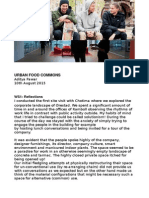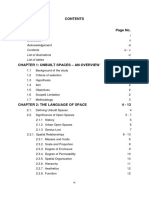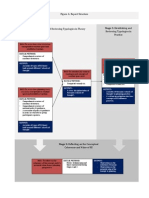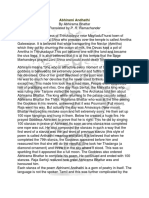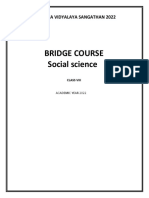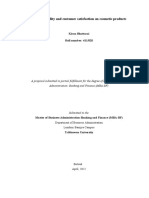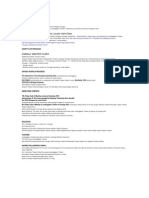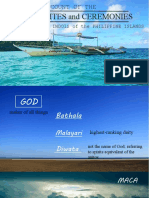0% found this document useful (0 votes)
152 views1 pageAn Example of A Focus Group Strategy
The document outlines the questions and themes that were used to structure focus group discussions about residual spaces (RS) and school organizing and planning areas (SLOAP). The questions were designed to: 1) Create a relaxed atmosphere and get participants comfortable; 2) Assess participants' awareness and perceptions of RS without influencing them; 3) Draw out examples of how participants have interacted with these spaces; and 4) Ensure vital information was retrieved about how participants conceptualize and define RS. A final exercise involved categorizing aspects of these spaces in a SWOT diagram to briefly review contributions and facilitate debate.
Uploaded by
Daniel SladeCopyright
© Attribution Non-Commercial (BY-NC)
We take content rights seriously. If you suspect this is your content, claim it here.
Available Formats
Download as PDF, TXT or read online on Scribd
0% found this document useful (0 votes)
152 views1 pageAn Example of A Focus Group Strategy
The document outlines the questions and themes that were used to structure focus group discussions about residual spaces (RS) and school organizing and planning areas (SLOAP). The questions were designed to: 1) Create a relaxed atmosphere and get participants comfortable; 2) Assess participants' awareness and perceptions of RS without influencing them; 3) Draw out examples of how participants have interacted with these spaces; and 4) Ensure vital information was retrieved about how participants conceptualize and define RS. A final exercise involved categorizing aspects of these spaces in a SWOT diagram to briefly review contributions and facilitate debate.
Uploaded by
Daniel SladeCopyright
© Attribution Non-Commercial (BY-NC)
We take content rights seriously. If you suspect this is your content, claim it here.
Available Formats
Download as PDF, TXT or read online on Scribd
/ 1













